Small Lush Garden Ideas: Transform Your Space into a Green Paradise
Creating a small, lush garden in your outdoor space can transform it into a beautiful, serene oasis. With the right ideas and tips, you can make even the tiniest garden area flourish and appear much larger. How can you turn your compact yard into a green haven without overcrowding it?
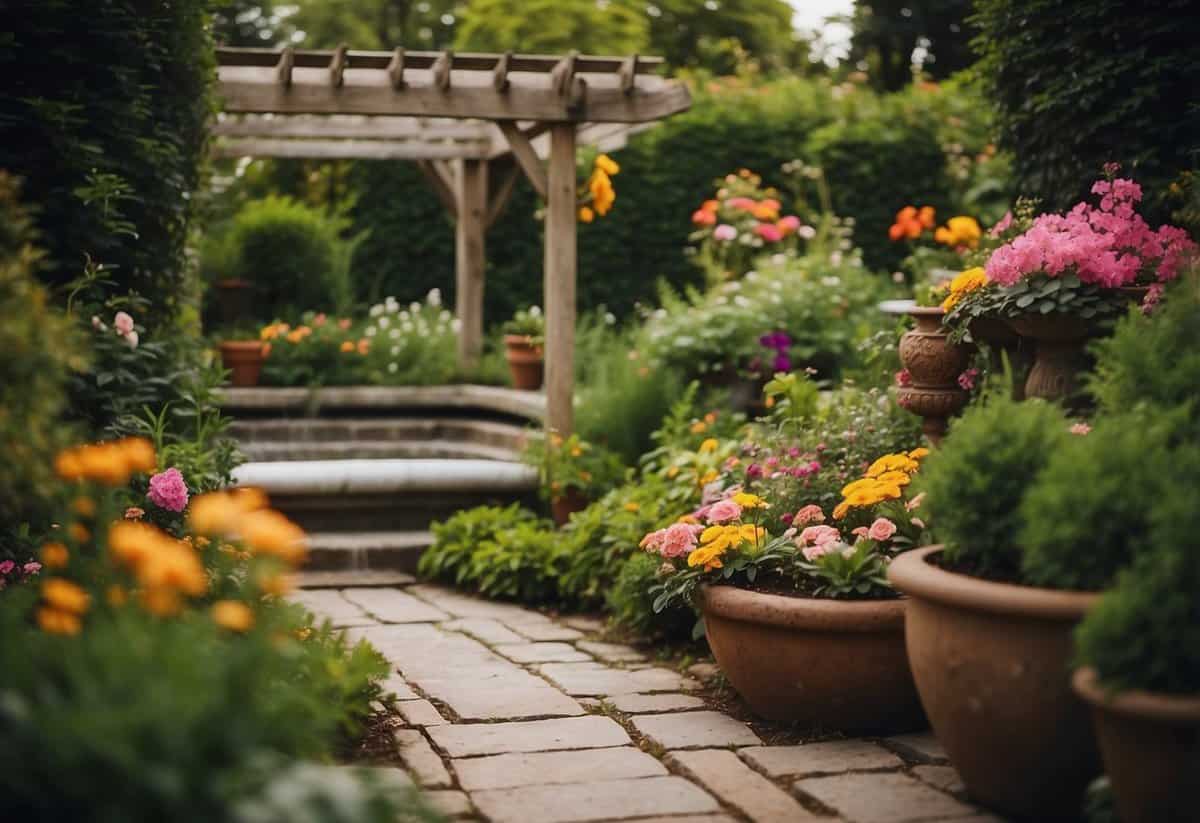
In this article, you’ll discover creative and practical ideas that will help you maximize your garden space. You’ll learn how to utilize vertical gardening, select the right plants, and incorporate clever design elements to achieve a lush, thriving garden, no matter how small your area is.
1) Vertical Wall Garden

A vertical wall garden is a fantastic way to add green to small spaces. You can create it on a balcony, patio, or even indoors.
Start by using shelves, hanging planters, or modular green panels. This type of garden can hold herbs, flowers, or small shrubs.
It’s a great option for people short on space because vertical wall gardens use walls to create a lush, green environment.
2) Fairy Garden with Miniature Plants

Creating a fairy garden with miniature plants is a fun way to add a touch of magic to your yard. Start by choosing a container or a small plot in your garden.
Fill it with moss and tiny plants like succulents or herbs. Add a tiny fairy house to be the main attraction.
Decorative items like small pinecones, tiny flowers, and little fairy figurines can make your garden feel enchanting. You can even include twinkling LED lights for a magical glow at night. For more ideas, you can check out this guide.
3) Tiered Herb Garden
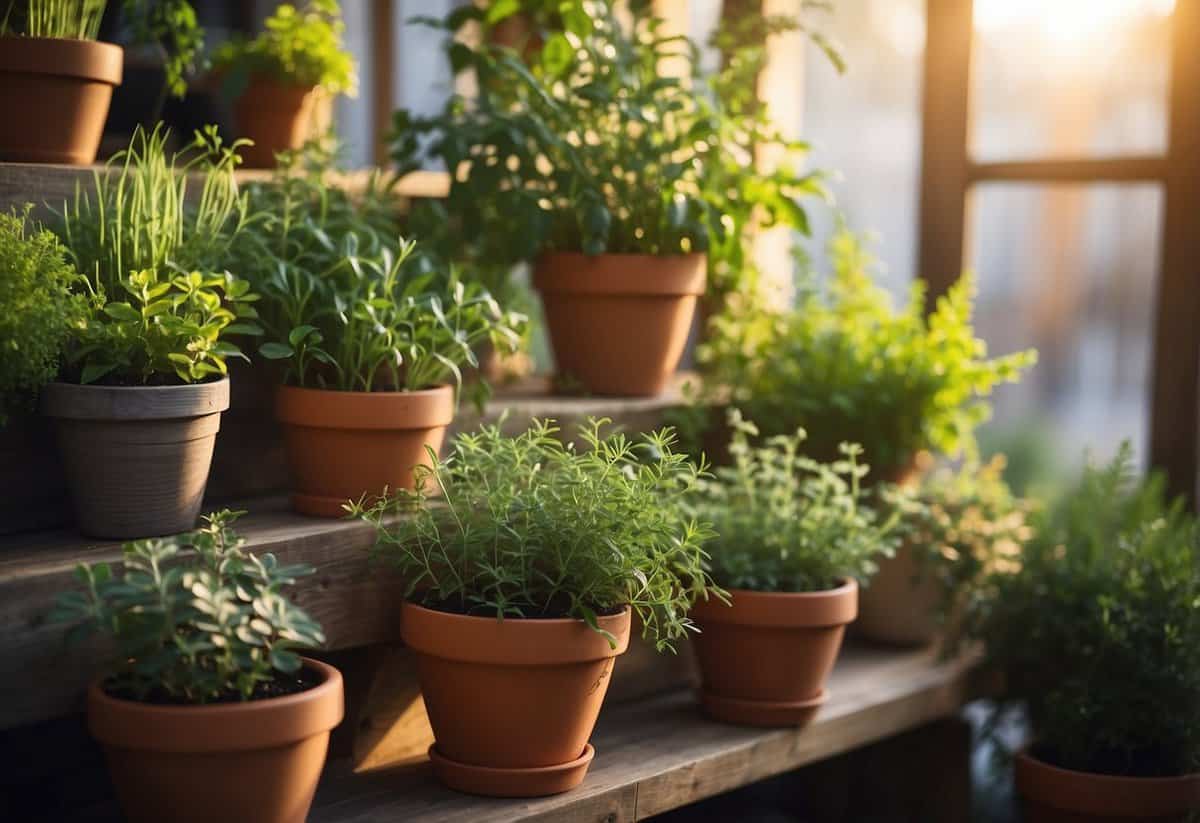
A tiered herb garden is perfect for small spaces. By stacking planters, you can grow many herbs without needing a lot of room.
You can use old wooden crates, clay pots, or even repurposed furniture. Just stack them securely and fill them with soil and your favorite herb seeds.
A tiered garden adds visual interest and makes it easy to care for your plants. Place it in a sunny spot, and enjoy fresh herbs right at your fingertips.
For more ideas, check out these herb garden plans.
4) Zen Garden with Moss and Stones
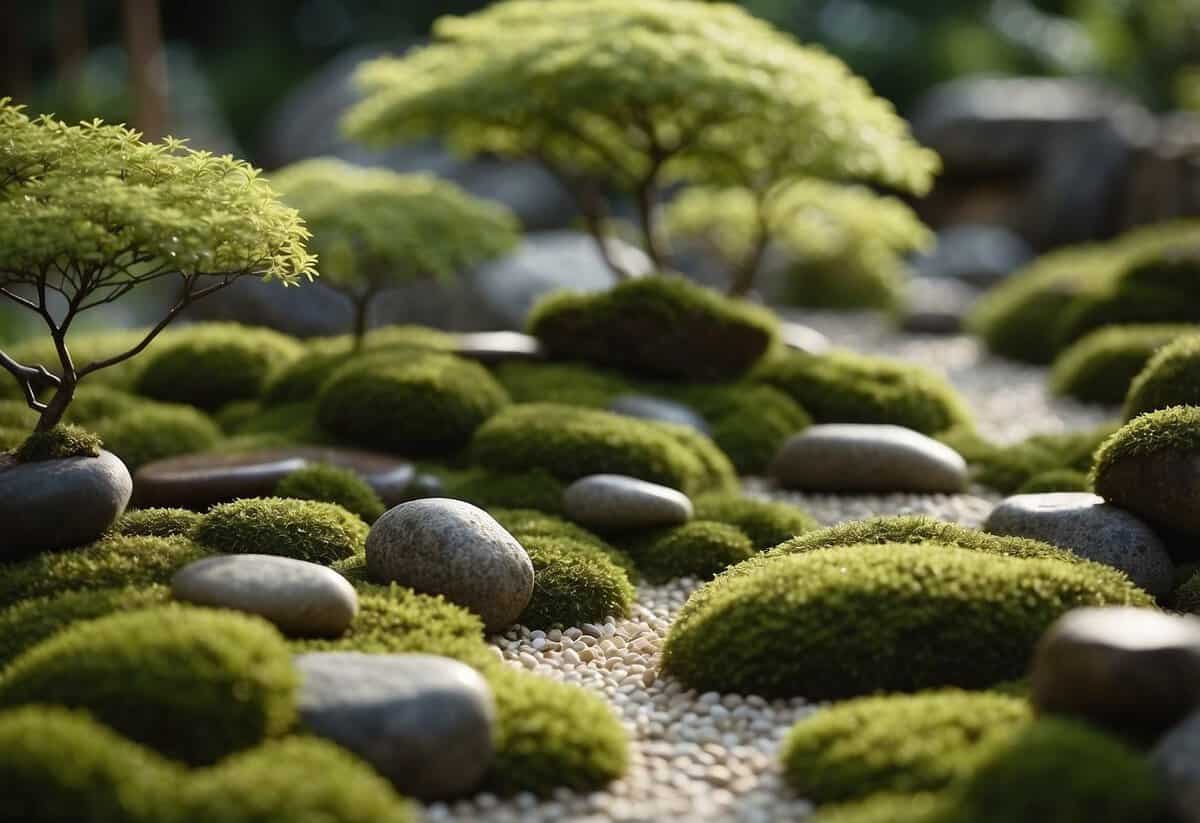
Creating a Zen garden with moss and stones offers a peaceful retreat in your backyard. Moss adds a lush, green touch and is easy to maintain.
Stones bring texture and form to the garden. Choose a mix of sizes and shapes for visual interest. Arrange them thoughtfully to mimic natural landscapes.
Consider adding a small path with moss lining the edges. This creates a serene walking area. Integrate moss with stone arrangements to highlight their beauty.
For further inspiration, check out Japanese Zen Garden Ideas for small backyards.
5) Succulent Rock Garden

A succulent rock garden can add beauty to any small space. Use stacked rocks to give height to low-growing succulents. This adds depth and interest.
Consider making succulent kokedama. These hanging moss balls save space and look unique.
You can also turn an old aquarium into a succulent garden. Layer soil, rocks, and different succulents for a compact, eye-catching display.
6) Trellis with Climbing Roses

Adding a trellis with climbing roses to your garden can create a beautiful focal point. Choose a spot that gets plenty of sunlight for the best blooms.
A trellis can come in various designs, from simple wooden structures to ornate metal frames.
Train the rose vines gently, weaving them through the trellis as they grow.
Consider using a DIY trellis for a personal touch. This can add charm and romance to your garden.
Regular pruning and maintenance will keep your roses healthy and vibrant. Enjoy the burst of colors and fragrant blossoms they bring!
7) Miniature Water Fountain

A miniature water fountain can be a charming addition to your small garden.
You can transform an old wine barrel into a quaint pond with water plants and a small fountain. This idea not only saves space but also brings a soothing water feature to your garden.
If you prefer something more modern, a sleek oval fountain made of durable cast stone could be perfect. This option is visually pleasing and long-lasting, creating a beautiful centerpiece. For more ideas, check out these small outdoor fountain ideas.
8) Garden Path with Stepping Stones
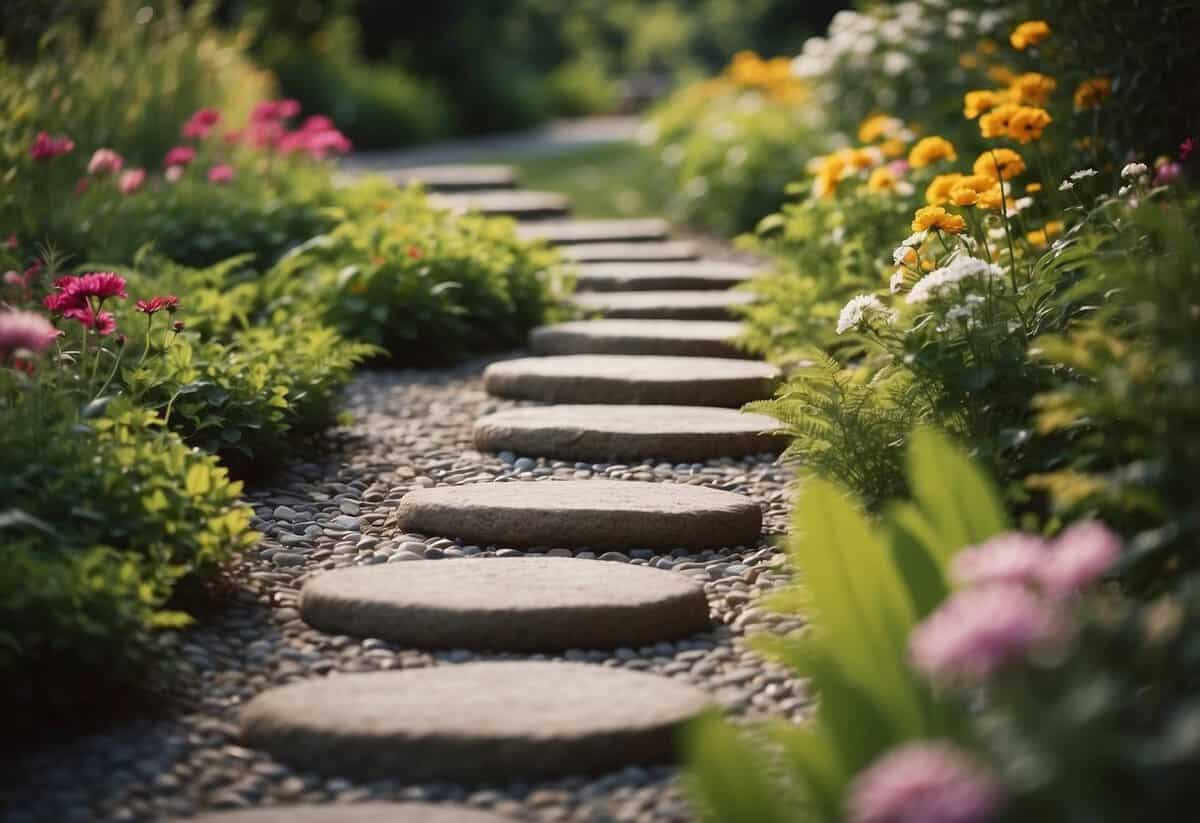
Creating a garden path with stepping stones adds charm and functionality to your garden. Stepping stones can make navigating through your garden easier while adding a decorative element.
Use rocks or flat stones spaced evenly apart. This helps you walk comfortably and keeps your shoes clean.
Consider combining stones with lush greenery like ferns or small bushes to create a natural look. For more ideas, check out these stepping stone walkway ideas.
9) Raised Bed for Vegetables
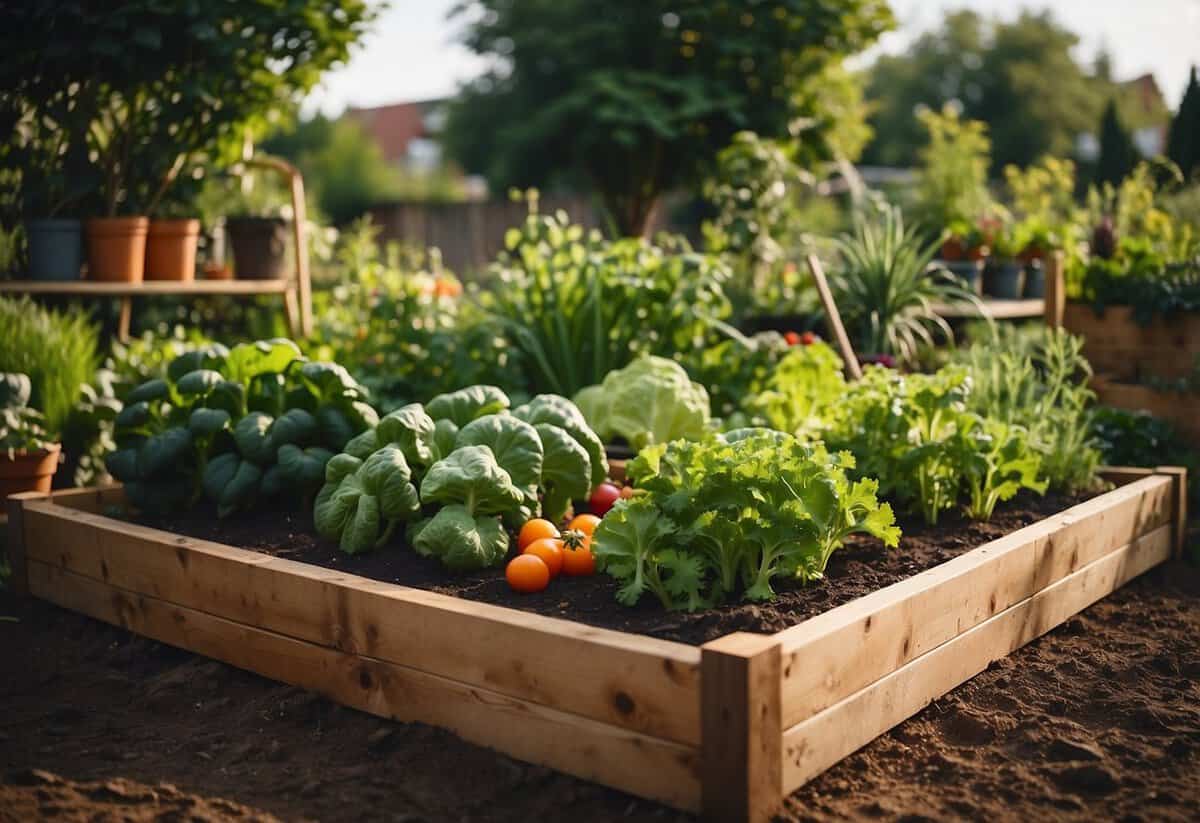
Creating a raised bed for vegetables is a great idea. It gives your garden structure and can make planting easier.
You can grow veggies like carrots, tomatoes, and lettuce. These plants thrive in raised beds because of the well-drained soil.
Using compost in your raised bed enriches the soil and boosts plant growth.
10) Hanging Planters with Flowers

Hanging planters are a great way to add beauty to your garden without taking up much space. You can hang them on your porch or balcony.
Choose flowers that thrive in full sun, like calibrachoa or verbena. These flowers will add bright and vibrant colors to your space.
Consider placing your hanging planters at varying heights to create a layered look. This adds depth and visual interest to your garden.
Design Principles for Small Lush Gardens

Transforming a small garden into a lush oasis involves creative use of vertical gardening and layered plant arrangements. These strategies help you make the most of limited space while adding depth and visual appeal.
Maximizing Space with Vertical Gardens
Vertical gardens are ideal for small spaces. By growing plants upwards, you can save ground space and still enjoy a variety of greenery. Use trellises, wall-mounted planters, or even hanging pots to create your vertical garden.
Climbing plants like ivy or wisteria are perfect for this. They grow quickly and can cover walls or fences, providing a lush backdrop. Shelves and ladders can also hold potted plants, making efficient use of vertical space.
For a more structured look, create a green wall with panels. These walls can hold a mix of plant types, from herbs to flowers, adding both beauty and utility. You can even integrate a drip irrigation system to ensure all plants get enough water.
Creating Visual Interest with Layers
Layering plants in your garden creates depth and visual interest. Start with tall plants at the back and shorter ones in front. This helps every plant get sunlight while creating a tiered effect that makes your garden look fuller.
Mixing different types of plants is key. Combine plants with varying heights, colors, and textures. For example, pair tall ornamental grasses with medium-height shrubs and low-growing ground cover.
Use containers to add layers along pathways or around seating areas. This can make small gardens look more dynamic and less flat. Changing plant containers seasonally can keep your garden interesting all year round.
Creating levels with raised beds or terraces can also add more dimension. Use stones, bricks, or wood to build these layers, giving your garden a unique and structured look.
Selecting Plants for a Small Lush Garden

For a small, lush garden, picking the right plants is essential. Focus on plants that thrive with minimal care and those that are native to your area. This ensures a beautiful, sustainable garden.
Choosing Low-Maintenance Plants
Low-maintenance plants easily fit into a small garden. These plants do not need a lot of attention.
Succulents: These are great because they store water in their leaves and need less frequent watering. Examples include Echeveria and Sedum.
Perennials: These plants come back year after year without replanting. Good choices are Hostas and Daylilies.
Grasses: Ornamental grasses like Festuca and Carex add texture and are easy to care for.
Using low-maintenance plants saves you time and ensures your garden remains lush throughout the year.
Incorporating Native Species
Native plants naturally thrive in your environment. They require less water, fertilizer, and care compared to non-native species.
Milkweed: This is perfect for attracting butterflies and fits well in smaller spaces.
Coneflowers: These hardy flowers come in many colors and attract pollinators, flourishing in most soils.
Ferns: Many native ferns are ideal for shady areas in your garden.
By choosing native plants, you support local wildlife and create a garden that is in harmony with the environment. Focus on species that are well-suited to your local climate and soil to ensure growth and vitality.
Maintenance Tips for a Lush Garden

To keep your garden lush and vibrant, focus on key maintenance practices including regular watering and pruning, as well as maintaining soil health and fertilization. These simple steps will help ensure your plants thrive with minimal effort.
Regular Watering and Pruning
Watering your garden appropriately is crucial. Most plants need about 1-1.5 inches of water per week. Use a rain gauge to monitor rainfall and supplement with additional watering as needed. Early morning watering helps reduce evaporation and allows plants to absorb moisture throughout the day. Consider installing a drip irrigation system for more efficient and controlled watering.
Pruning helps maintain plant health by removing dead or overgrown branches. Regular pruning encourages new growth and improves air circulation around plants. Use sharp, clean tools to make precise cuts. For flowering plants, prune after blooming to avoid cutting new buds.
Soil Health and Fertilization
Healthy soil is the foundation of a vibrant garden. Regularly test your soil to monitor its pH levels and nutrient content. Amend your soil with organic matter like compost or well-rotted manure to improve its structure and fertility. This enhances water retention and provides essential nutrients to your plants.
Fertilizing is also important. Use a balanced, slow-release fertilizer that meets the specific needs of your plants. Organic options like compost tea or fish emulsion offer benefits without the risk of chemical runoff. Apply fertilizer according to the instructions on the package, and be careful not to over-fertilize, as it can harm your plants.
By following these maintenance tips, you can enjoy a lush, thriving garden with less effort. Happy gardening!







